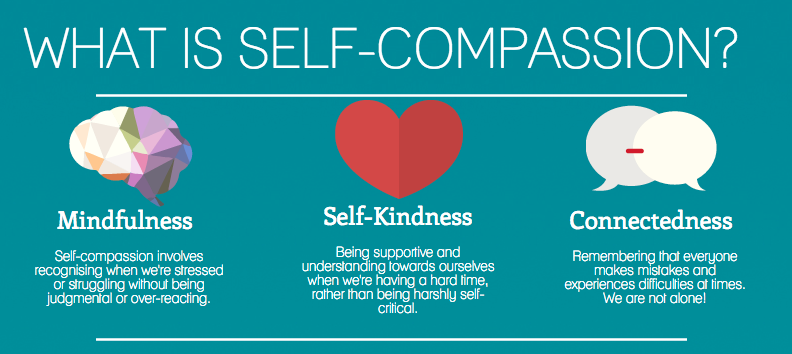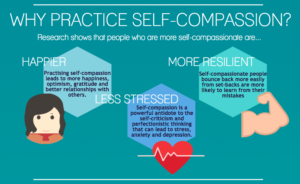
Mental Health and Emotional Wellness
In today’s fast-paced world, where the lines between work, family, and personal time often blur, setting
healthy boundaries has become more crucial than ever. This is especially true for parents and caregivers who are constantly navigating the needs of others while trying to maintain their own mental health and self-care routines.
Understanding Healthy Boundaries
Healthy boundaries are the invisible lines that define our personal space, both emotionally and physically. They help protect our well-being by delineating what is acceptable and unacceptable in our interactions. Setting these boundaries is a form of self-care that everyone should prioritize.

Why Healthy Boundaries Are Important
- Protects Mental Health: Establishing boundaries helps reduce stress and prevent burnout by ensuring that you are not overextending yourself. It allows you to focus on what truly matters without feeling overwhelmed.
- Enhances Relationships: Healthy boundaries foster respect and understanding in relationships. You cultivate mutual respect and stronger connections by clearly communicating your needs and limits.
- Supports Self-Care: Boundaries are a critical component of self-care, allowing you to allocate time and energy to activities that rejuvenate and fulfill you.
- Empowers Personal Growth: Setting boundaries encourages self-reflection and confidence, empowering you to take control of your life and make decisions that align with your values.

Steps to Setting Healthy Boundaries
- Self-Reflection
Begin by reflecting on your current boundaries or lack thereof. Consider areas where you often feel discomfort, resentment, or exhaustion. These feelings can signal the need for boundary-setting.
- Define Your Limits
Clearly identify what you need to protect your mental health and well-being. This could include time alone, saying no to additional responsibilities, or limiting specific interactions.
- Communicate Clearly
When discussing boundaries, use clear and assertive communication. Express your needs in a straightforward manner without apologizing or justifying them. For example, “I need some time to myself after work to unwind” is effective and respectful.

- Be Consistent
Consistency is vital when enforcing boundaries. Be firm yet empathetic when reminding others of your limits. Over time, people will learn to respect your space and needs.
- Practice Self-Care
Regularly check in with yourself to ensure that others respect your boundaries and that you honour your self-care commitments. Remember, boundaries are flexible and can be adjusted as your needs change.
- Seek Support
If you’re struggling to set boundaries, consider seeking support from mental health professionals or joining communities focusing on boundary-setting and self-care. Resources like Brené Brown’s workbooks and discussion guides can provide valuable insights and tools.

Conclusion
Setting healthy boundaries is essential for protecting your mental health and fostering relationships and personal growth. You empower yourself to lead a balanced and fulfilling life by prioritizing boundaries.
Ready to take the next step in your boundary-setting journey? Connect with like-minded individuals in our community or explore resources that can help you refine this crucial skill. Remember, setting boundaries is an act of self-love and empowerment.

Mental Health and Emotional Wellness
Many individuals explore various methods to achieve personal growth and fulfillment in today’s fast-paced world. Among these, hypnotherapy is gaining popularity as a powerful tool for manifestation—a process of bringing your desires and aspirations into reality. Understanding how hypnotherapy can aid manifestation might be your next step toward creating the life you want.
Understanding Hypnotherapy and Manifestation
What is Hypnotherapy?
Hypnotherapy is a form of talk therapy that involves guided relaxation and focused attention to achieve a heightened state of awareness. During this state, individuals are more open to suggestions, making it an effective method for addressing subconscious beliefs and patterns hindering personal growth.

What is Manifestation?
Manifestation is bringing something tangible into your life through attraction and belief. It’s about aligning your thoughts, feelings, and actions to bring positive changes and fulfill your desires. Often, manifestation incorporates positive affirmations and visualization techniques to amplify its effects.
How Hypnotherapy Enhances Manifestation
- Breaking Down Mental Barriers
One of the primary ways hypnotherapy aids manifesting the life you want, is by breaking down mental barriers. Often, subconscious blocks—such as limiting beliefs or negative thought patterns—can hinder your ability to manifest your goals. These barriers can be identified and reprogrammed through hypnotherapy, allowing for a clearer path to manifesting your desires.
- Reinforcing Positive Affirmations
Positive affirmations are a key component of manifestation. They help shift your mindset toward positivity and possibility. A hypnotherapist can help you reinforce these affirmations more deeply, reaching the subconscious mind where lasting change occurs. This reinforcement helps solidify new, empowering beliefs that support your manifestation goals.

- Visualizing Success
Visualization is another powerful tool in the process. It involves creating vivid mental images of your desired outcome. During hypnotherapy, visualization exercises can help you to experience the feelings and sensations associated with achieving your goals. This practice boosts confidence and increases motivation to take action toward those goals.
- Aligning Subconscious and Conscious Mind
For manifestation to be effective, your conscious desires must align with your subconscious beliefs. Hypnotherapy facilitates this alignment by bringing subconscious thoughts to the surface and addressing conflicts between the two. Once aligned, your intentions become more powerful, paving the way for successfully manifesting your dreams.

Getting Started with Hypnotherapy for Manifestation
Many individuals have reported tangible results from using hypnotherapy for manifesting their goals. The potential benefits are vast, from career advancements to improved relationships and financial success. By committing to regular hypnotherapy sessions and incorporating manifestation techniques into daily life, many find themselves closer to realizing their dreams.
If you’re interested in exploring hypnotherapy as a tool to manifest the life you want, consider the following steps:
- Research Qualified Practitioners: Look for certified hypnotherapists with experience in manifestation techniques.
- Set Clear Intentions: Define what you want to manifest and keep these intentions clear and specific.
- Commit to Regular Sessions: Consistency is vital. Regular hypnotherapy sessions can reinforce positive changes and keep you on track.
- Practice Daily Affirmations and Visualization: Incorporate these practices into your routine to support the work done in hypnotherapy.
Conclusion
Hypnotherapy offers a unique and practical approach to manifestation, empowering you to overcome subconscious blocks and align your mind with your deepest desires. By integrating hypnotherapy into your personal development journey, you can enhance your ability to manifest the life you truly want. Ready to take the next step? Explore hypnotherapy for manifestation today and unlock your full potential.
Written by DeVera Nybo, Owner, Newleaf Total Wellness Centre

Mental Health and Emotional Wellness
People often misinterpret perfectionism as striving to be the best, but it is more complex. Brene Brown describes it as believing that achieving perfection in our actions, appearance, and life can protect us from criticism, blame, and shame. Despite its promise of protection, perfectionism often results in stress, anxiety, and self-doubt.
Defining Perfectionism
Perfectionism extends beyond high standards to an all-or-nothing mindset where falling short of flawless is unacceptable. This mentality can affect various life areas, such as work and relationships, leading to dissatisfaction and a fear of failure. Trying to be perfect is not self-improvement. Perfectionism is, at its core, about trying to earn approval. Brown also warns, “Perfect and bulletproof are seductive, but they don’t exist in the human experience.” Acknowledging this is the first step toward overcoming perfectionism.

The Dangers of Perfectionism
While pursuing excellence can fuel success, trying to be perfect can be crippling, often leading to:
- Procrastination: The fear of falling short of perfection can delay the initiation or completion of tasks.
- Mental Health Issues: Persistent self-criticism and fear of judgment contribute to anxiety, depression, and feelings of inadequacy.
- Relationship Strain: Expectations can extend to others, causing frustration and conflict.
- Decreased Productivity: Focusing excessively on details can impede task completion and stifle creativity.
- Shame: Perfectionism is shame avoidance. Shame is a universally uncomfortable emotion that creates fear that we are unworthy of connection. However, because perfection is unattainable, shame ultimately follows us on our quest for perfection.

Identifying Perfectionism
Recognizing signs of perfectionism is essential. If you frequently struggle to meet your own standards, feel anxious or frustrated trying to fulfill them, or hear that your standards are too high, perfectionistic tendencies might be the issue.
Reflective Questions:
- Do I find it difficult to meet my standards?
- Am I often anxious or frustrated in trying to meet them?
- Have others remarked that my standards are excessively high?
- Do my standards prevent me from completing tasks or enjoying life?
- Am I critical of others who fail to meet my high expectations?
- Do I have different expectations for myself than I do for others?

Examples of Perfectionist Thoughts and Behaviors
Perfectionist Feelings:
- Feeling anxious or depressed when unable to meet self-imposed expectations.
- Engaging in constant self-criticism despite putting in effort and time.
- Feeling ashamed or uncomfortable with compliments.
Perfectionist Thinking:
- Black-and-white thinking: Viewing anything less than perfect as a failure.
- Catastrophic thinking: Assuming the worst will happen if you make a mistake.
- Should Statements: Believing you must always be perfect and never show weakness.
Perfectionist Behavior:
- Chronic procrastination or giving up when tasks aren’t perfect.
- Excessive checking for errors or unnecessarily redoing work.
- Avoiding new experiences to prevent mistakes.

Strategies to Overcome Perfectionism
a) Realistic Thinking vs Perfectionism
Replace negative, self-critical thoughts with realistic, positive affirmations. Consistent practice can foster new thought patterns.
Examples:
“Nobody is perfect!”
“All I can do is my best!”
“Making a mistake is human.”
b) Perspective Taking
Challenge distorted perspectives by considering others’ viewpoints. Ask yourself:
- How would a friend see this situation?
- Are there alternative perspectives?
c) Consider the Big Picture
Redirect your focus from details to broader perspectives by asking:
- What’s the worst that could happen?
d) Compromising vs Perfectionism
Establish flexible, realistic standards and be open to compromise.

Moving Forward
Overcoming perfectionism involves accepting imperfections and valuing progress over flawlessness, not lowering your standards. By practicing these strategies and acknowledging perfection’s unrealistic nature, you can lead a more fulfilled, balanced life.
If you’re ready to address your perfectionism further, consider professional guidance. Engage with mental health professionals, join support groups, or read insightful books to support your self-improvement. While perfection may be an illusion, growth and happiness are attainable.
Written by: DeVera Nybo, Owner, Newleaf Total Wellness Centre

Mental Health and Emotional Wellness
Hard emotions can feel like a storm that appears out of nowhere. One minute, you’re going about your day, and the next, you’re overwhelmed by feelings of anger, sadness, or anxiety. While pushing them away is tempting, the key to emotional wellness is acknowledging and processing these emotions. Let’s explore how to approach these feelings with compassion and understanding so they can pass without leaving a lasting impact.
1. Engage with Your Feelings
The first step in managing hard emotions is to engage with them fully. This doesn’t mean letting them take over your life but acknowledging their presence. You create a space where healing can begin by allowing yourself to feel without judgment. Remember, emotions are transient—they will pass.

2. Get Curious About the Story
Every emotion has a story. When a feeling arises, instead of immediately reacting, pause and ask yourself, “What is this about?” Understanding the origin of your emotions can provide valuable insights into your triggers and patterns.
3. Write it Down
Journaling is a powerful tool for processing emotions. Write down your feelings and why you think you’re feeling that way. This practice helps clarify your thoughts and allows you to see your feelings from a different perspective.

4. Dig In
- What Are the Facts, and What Are My Assumptions?
Separate facts from assumptions. Often, our emotions are tied to stories we’ve created in our minds. By identifying the truth, you can reduce the intensity of your emotional response.
- What Do I Need to Know About the Others Involved?
Consider the role of others in your emotional landscape. Understanding their perspectives may shift your view and help alleviate some of the feelings you’re experiencing.
- What Am I Really Feeling? What Part Did I Play?
Dig deeper into your emotions. Are you truly angry, or is there underlying sadness or fear? Recognizing the source of your feelings can be liberating. Reflect on your actions and consider how they may have affected the situation.
5. Regulate, Don’t Suppress
Emotion regulation is about managing your feelings, not suppressing them. Techniques such as deep breathing, meditation, and physical activity can help you stabilize your mood. These practices enable you to respond to emotions healthily and productively.

6. Work with a Helping Professional
If your emotions feel overwhelming and difficult to manage on your own, consider seeking support from a professional. Therapists and counsellors can provide a safe space to explore your feelings and develop effective strategies for dealing with them.
In conclusion, remember that hard emotions are part of being human. They do not define you, nor do they have to control your life. By adopting a mindful approach to your feelings, you’ll find they pass quickly, making you stronger and more resilient. If you’re ready to take the next step towards emotional wellness, consider booking an appointment with a helping professional who can help guide you.
Written by: DeVera Nybo, MBA, CEO/ Owner Newleaf Total Wellness Centre

Healthy Habits & Lifestyle
In an age where health conscientiousness is a lifestyle, supplements have become as ubiquitous as gym memberships and protein shakes. But as our shelves sag under the weight of these promising bottles and packets, it’s crucial to discern the science from the marketing, ensuring that what we ingest aligns with our wellness objectives. This blog post will guide health enthusiasts, fitness fans, and wellness seekers through the complex world of natural aides and remedies.

What Are Supplements?
At their most basic, supplements are products intended to augment the diet. They can include vitamins, minerals, herbs, amino acids, enzymes, and other nutrients. They come in various forms, including tablets, capsules, powders, and liquids.
The general idea is that they can enhance your health. However, it’s important to remember that they are not intended to replace whole foods or a balanced diet but to work alongside them.
The Natural Fallacy
A common misperception about supplements is the belief that ‘natural’ necessarily equals ‘safe.’ Just because a supplement is natural does not mean it lacks side effects or risks. In many cases, ‘natural’ supplements can interact with prescription medications, may not be advisable for specific health conditions, or could even contain contaminants.
Echinacea, widely thought to prevent or treat colds, may interact with medications that affect the liver. Similarly, St. John’s Wort, while natural, can interfere with antidepressants and birth control pills. Always research and understand all the side effects and interactions a supplement might have. If in doubt, consult a Naturopathic Doctor and follow their advice strictly.

Quality Matters: Not All Supplements Are Created Equal
The supplement industry is vast and varied, and not all products adhere to the same quality standards. Some supplements may have filler ingredients, and others could have a higher or lower potency than labelled. Look for certifications or third-party testing from organizations like NSF International to ensure product quality and potency.
Seek Professional Guidance
Before adding any supplement to your regimen, consulting a regulated health professional such as a Naturopathic Doctor is imperative. They possess comprehensive knowledge about supplements, including their benefits, risks, and potential interactions with other medications.
With the explosion of supplement use, many people turn to the internet or gym acquaintances for advice. While well-meaning, such sources may lack the depth of knowledge necessary to provide safe recommendations. Professional advice is not just a formality—it’s a crucial step in safeguarding your health.

Supplements Are Not Silver Bullets
It’s vital to recognize that supplements are not a cure-all. They are not meant to replace the fundamental components of a healthy lifestyle: nutritious meals, regular physical activity, adequate sleep, and stress management. Supplements should enhance, not substitute for, these pillars of health.
Investing in quality whole foods, learning to prepare balanced meals, and maintaining a stable exercise routine are foundational. Supplements can fill nutritional gaps or assist with specific deficiencies, but one should not lean on them as crutches that allow neglect of diet or exercise.
Conclusion
Supplements might play a role in your health strategy, whether you’re looking to optimize your physical performance, enhance your well-being, or address specific health goals. Nonetheless, it’s crucial to approach them with a discerning eye, armed with information and professional guidance.
Remember that the pursuit of health is a holistic endeavour. When supplements find their appropriate place within a balanced lifestyle, they can be beneficial allies on your wellness journey. Always prioritize the natural abundance of nutrients available through a diverse diet and use supplements wisely to augment your path to health.

Remember:
- Verify the safety and quality of any supplement you consider taking.
- Consult with a healthcare provider before starting any new supplement, especially if taking other medications.
- Do not rely on supplements to replace a nutritious diet and active lifestyle.
Stay informed, stay healthy, and stay dedicated to your wellness goals. If you have questions about interactions, consider booking an appointment with a Naturopath. If you want to know more about how supplements can help you achieve your nutrition goals, consider booking a consultation with a Holistic Nutritionist.
Written By: DeVera Nybo, MBA, Owner Newleaf Total Wellness Centre

Therapy Options Explained
As the owner of Newleaf Total Wellness Centre in Abbotsford, I am often asked if hypnosis can really be considered therapy. The answer is a resounding YES! Hypnotherapy is a holistic approach to treating many physical and mental health conditions. Initially, the idea of hypnotherapy seems mysterious and, to some extent, intimidating. However, it is a well-respected albeit unregulated therapy practiced by certified professionals. While the use of hypnosis by certified hypnotherapists has gained greater acceptance in mainstream healthcare, one must understand that hypnotherapy is not a one-size-fits-all technique. People have different personalities, temperaments, and emotional regulation, which affect the success of hypnotherapy. This article will explain hypnotherapy and what happens during a session to help you make an informed choice for your therapeutic needs.
What is Hypnotherapy?
Hypnotherapy is a type of talk therapy that involves entering an alpha/theta brain wave state, which occurs naturally during sleep. Its purpose is to make lasting positive changes in your thoughts, emotions, and behaviours. By combining talk therapy with therapeutic hypnosis, hypnotherapy creates a safe and supportive environment to bridge the gap between conscious intentions and subconscious motivations. You can begin to align your thoughts and actions with your desired outcome. Typically, each hypnotherapy session lasts around an hour, and patients often see noticeable improvements within two to ten sessions. However, the required sessions can vary depending on individual needs and goals.

How hypnotherapy works
What can Hypnotherapy Treat?
Hypnotherapy has been extensively researched and is proven to help individuals manage stress, anxiety, irritable bowel syndrome, PTSD, and the behavioural issues experienced by children with autism. Hypnosis also provides a practical solution for pain management without any side effects, which is especially important in light of the growing concerns around opioid addiction.
In addition to pain control and behaviour change, hypnotherapy holds promise in addressing mental health conditions, treating asthma and alleviating the side effects of cancer treatment. This versatile approach extends to breaking free from the fight, flight or freeze response.
However, it is important to note that hypnotherapy may not be suitable for people with severe mental health issues or those under the influence of drugs or alcohol. Furthermore, experts advise against using hypnosis for memory retrieval. Remembering the past is essentially a form of storytelling, as our memories depend on the last story we tell ourselves. Consequently, individuals hoping to recall childhood events should be cautious of creating false memories through hypnotherapy.
How does it Work?
By accessing the power of your subconscious mind, hypnotherapy allows you to rewrite the code of your mental programming. The conscious mind only controls a small portion of your overall well-being, while the subconscious accounts for a staggering 88%. Hypnotherapy helps reframe your subconscious mindset to align with your goals and dreams.

Hypnotherapy session
What happens in a session?
Stage One – Introductions and Goal Setting
During your first session, your hypnotherapist will get to know you, your reasons for seeking hypnotherapy, and your experience with therapy in general. They will ask about your medical and mental health history, the symptoms you are experiencing, any medications you are taking and your goals for therapy. This information is crucial for the hypnotherapist to create a customized plan for your treatment. Once your hypnotherapist has gathered initial information, they will explain how hypnotherapy works. They will describe the hypnosis process, what will happen during the session, how you may or may not feel, and what to expect after the session. It’s essential to ask all your questions now to ensure you feel fully informed, comfortable and relaxed before your session.
Stage Two – Hypnosis and Conversation
The hypnotherapist will lead you into a relaxed state, similar to meditation, by having you imagine yourself in a relaxing, peaceful place, allowing your mind to support your body in deep rest. With your eyes closed, you’ll remain fully alert as they guide you through the session. Focusing on your breath, you’ll release stress and tension, entering a state of deep relaxation.
Once you have achieved a hypnotic state, the therapist will guide you on a visual journey to release negativity and incorporate positive changes. Through heartfelt discussions between your protected self and these vulnerable aspects, some discover a transformative experience. The intention is to forge a new relationship within yourself, building a foundation for growth and healing guided by love and protection.
This process involves suggestions to replace unfavourable trance states with more desirable ones. The therapist may also help you reframe negative experiences or memories so that they are no longer a source of stress or anxiety. You may feel lightheaded, relaxed, or even fall asleep during the session. Some patients report being amazed by the intensity of the beautiful emotions they experience in this state. These experiences are normal and to be expected.
It’s important to remember that the hypnotherapist will never ask you to do anything outside of your comfort zone or beliefs, and you will be in complete control throughout the process. Many patients describe hypnosis as a state of deep relaxation and heightened awareness. If, at any point, you feel uncomfortable or wish to stop, you can simply open your eyes and speak with your hypnotherapist. Communicating any feelings that arise is crucial, as this is the only way your therapist can make adjustments for subsequent sessions.
Stage Three – Ending the Session
Before bringing you back to full awareness, the hypnotherapist will often offer positive suggestions and allow you to address any remaining concerns. Your consent is of utmost importance, and a good hypnotherapist will include the suggestion, “No one, including myself, will be able to hypnotize you without your consent.” After the session, you will slowly come out of the hypnotic state and may feel more relaxed, energized, or the same as before. The therapist will conclude the session by discussing your experiences and observations. Before you leave, the therapist may also provide you with activities to do that support ongoing self-love and growth or self-hypnosis techniques to try on your own. In any case, you must practice self-reflection and self-care after the session.
Conclusion
Hypnotherapy may serve as a powerful tool for enhancing well-being, alleviating anxiety, and transforming negative behavioural patterns. Nevertheless, certain patients may experience restlessness, anxiety, or difficulty reaching an alpha/theta state, which can impact the effectiveness of hypnotherapy. It’s important to note that successful therapy relies heavily on the rapport between the client and therapist, with rapport accounting for more than 70% of therapy’s efficacy. It is essential to consider all your therapy options and find a therapist whose personality and technique suit your specific needs.

Ashlee Bennett
Do you still have questions? Book a 15 minute FREE consultation with our Hypnotherapist, Ashlee by clicking HERE.
Written by: DeVera Nybo

Therapy Options Explained
How often should you get a massage? It’s a question many people ask—but often only after pain, stress, or injury has already set in. We tend to book a massage when something hurts, schedule a few sessions until we feel better, and then forget about it again. But is there a better way? Could regular massage therapy help prevent pain before it starts?
Just as there are many reasons to see a registered massage therapist (RMT), there are also many answers to the question of how often you should visit. Let’s break it down by the three most common reasons you would need a massage: acute pain or injury, chronic pain or injury, and health and wellness.
Acute pain or injury
You’ve twisted your knee during your Wednesday night soccer game or you pulled a muscle in your groin while cleaning up the yard last weekend. Do you just book one massage appointment and hope it goes away? Although the frequency of your visits could depend on the type and severity of your injury, here are some good guidelines to follow.
First of all, book a visit as soon as possible after the initial injury, unless the injury is severe (for example, a break or tear) in which case you’ll need to see a doctor for imaging. After the initial appointment, book a follow up in 5 to 7 days. Once your therapist has had a chance to assess your injury, they’ll be able to develop a treatment plan best suited to your situation.
Chronic pain or injury
Every once in awhile that old back injury bothers you a bit. Or those hours hunched in front of a computer screen leave your neck and shoulders tight and tense. Regular visits for massage therapy can ease the discomfort of those old injuries and relieve tension from stress and improper posture. Here are some guidelines for how often you should visit to treat chronic pain or injury.
For routine discomfort from things like poor posture or extended sitting, you should visit between once every two weeks to once a month. If you’re dealing with pain from a recurring injury like sciatica or “throwing out your back” it’s best to visit once a week until you’re not experiencing any pain between appointments. Then you can continue to space out your appointments until you reach once a month—with no pain between sessions.
Health and wellness
Let’s say you don’t have any pain, injuries (old or new), or any uncomfortable stress or tension. Is there any benefit to seeing an RMT? Regular massage therapy can decrease mental and physical stress, improve your range of motion and the health of your joints, provide better postural awareness, and lessen postural strain and pain. Regular visits to an RMT will also prevent the tension build up that can lead to pain or injury. To optimize your health and wellness with ongoing massage therapy, pre-book an appointment once a month.
The benefits of massage therapy go beyond fixing damage that’s already been done. Get proactive with your health and enjoy the activities you love—without pain or tension.
Jason Togeretz, RMT

Mental Health and Emotional Wellness
What is self-compassion?
Self-compassion is having the same compassion towards yourself that you have towards others. Compassion for others is when you notice that someone is suffering and you are moved by their experience. Your heart feels for the suffering that they are going through. Compassion for others is not pity; it is about recognizing that everyone is human and imperfect. In a way you are identifying with the person you see struggling. Self-compassion is about taking this feeling and turning it inward towards ourselves.
Seems easy right? Unfortunately, given today’s society this has become a difficult skill. One only has to turn on any social media platform and see that we do not live in a world that is accepting of imperfection. From body image, to planning a birthday, to relationships and sex, to being an involved parent we are constantly reminded of what the expectation is and how we fail to meet this expectation every day.

Why is self-compassion important?
When we are lacking in self-compassion we tend to start talking to ourselves negatively. We realize that we can not meet the expectations that we, or others, have set and we berate ourselves for not doing a better job. Negative self-talk induces the stress hormone (cortisol) in our body. As we know having high levels of cortisol impacts our physical and mental well-being. Research shows that people who practice self-compassion are happier, less stressed, and more resilient.
So you may be asking yourself: “Why do I keep talking to myself this way if it’s not good for me?” There are many reasons an individual engages in negative self-talk, the most common one being for motivation. We think that we will be more motivated if we tell ourselves we aren’t doing a good job. The reality is that negative self-talk has the opposite effect. Other reasons may be that we don’t feel we deserve to be kind to ourselves, to punish ourselves, or past experiences have impacted our self-talk.
When we can speak kindly to ourselves and are gracious with ourselves we are happier, healthier, and more connected to ourselves and others. Overall we will excel in other areas of our life.

How can I incorporate self-compassion into my life?
There are three main components (or skills) of self-compassion.
- Self-kindness is demonstrating to yourself the kindness that you have towards others when you are struggling.
- Common humanity involves acknowledging that everyone suffers. Suffering is a part of life and as humans we all suffer. It’s recognizing that if you are suffering it is not because there is something wrong with you, but that everyone has moments of suffering. Inadequacies and imperfection is part of the shared human experience.
- Mindfulness is noticing when we are suffering and attending to our struggle. Being mindful is to observe negative thoughts with openness. As Dr Kristen Neff, the pioneer of self-compassion, states “we can not ignore our pain and feel compassion for it at the same time.” Lastly, a key piece of mindfulness is to remain non-judgemental when we notice our suffering and negative thoughts.
Practical Tips:
– Practice the three skills detailed above when you are in a moment of suffering.
– Create a self-compassion mantra that you can say to yourself when you are struggling. It may go like this “may I be kind to myself in this moment, may I give myself the compassion that I need” or “this is a moment of suffering, everyone suffers.”
– When you notice yourself speaking negatively ask yourself if you would speak to a friend like that.
– Reflect on the negative self-talk that you have noticed. This may include if there is a common theme in your self-talk, if it’s related to past experiences, or if you have a tendency to set unrealistic expectations and respond with negative self-talk.
– Engage in relaxation exercises, or guided meditations, that focus on self-compassion. There are a number of videos on youtube that are self-compassion meditations. Dr Kristen Neff records relaxation videos on her website (http://self-compassion.org/).
– Complete self-compassion exercises from Dr Kristen Neff’s website.
– Visit Dr Kristen Neff’s website to read more about self-compassion and how you can include this practice in your life.

My Story with Self-compassion
For most of my life I have been a perfectionist. As I stated above, perfectionism creates unrealistic expectations and then feelings of failure. So, you can imagine that my critical self-talk was fairly intense for most of my life. When I was introduced to the concept of self-compassion my first thought was “obviously I do this – I love myself so I must talk to myself kindly.” Well was I wrong! When I started listening to the thoughts running through my head I realized that I was extremely critical towards myself. At this point my immediate reaction was shame. I went to a place of “if you really love yourself how could you talk to yourself this way?” and “You know better.” I was clearly not using the mindfulness skill of listening with a non-judgemental stance. Thus, began my journey to changing the critical voice in my head into a compassionate voice. This required an immense amount of reflection on why I speak to myself critically. It also required a conscious daily practice to challenge the negative self-talk and change it into compassion.
I can say that now, after time and practice, self-compassion is more natural to me. What I’ve noticed is that I am considerably happier in my every day life. When I am struggling and I use self-compassion I have noticed that my fear, pain, anxiety, or whatever strong emotion I am experiencing immediately decreases in intensity. I then feel that I can manage whatever struggle I am experiencing. I have also noticed that the times that I do not utilize self-compassion in times of struggles that I have a harder time accepting myself and the situation which then increases the intensity of my suffering. Utilizing self-compassion has changed the way that I see myself and the world. I find that I am more accepting of myself, which in turn means that I can connect to my worthiness and self-love. It is wonderful gift you can give yourself when you can be compassionate to yourself and connect to your worthiness. I hope this inspires you to take your own journey to self-compassion.
Kristi Breugem RCC, MSW, RSW































